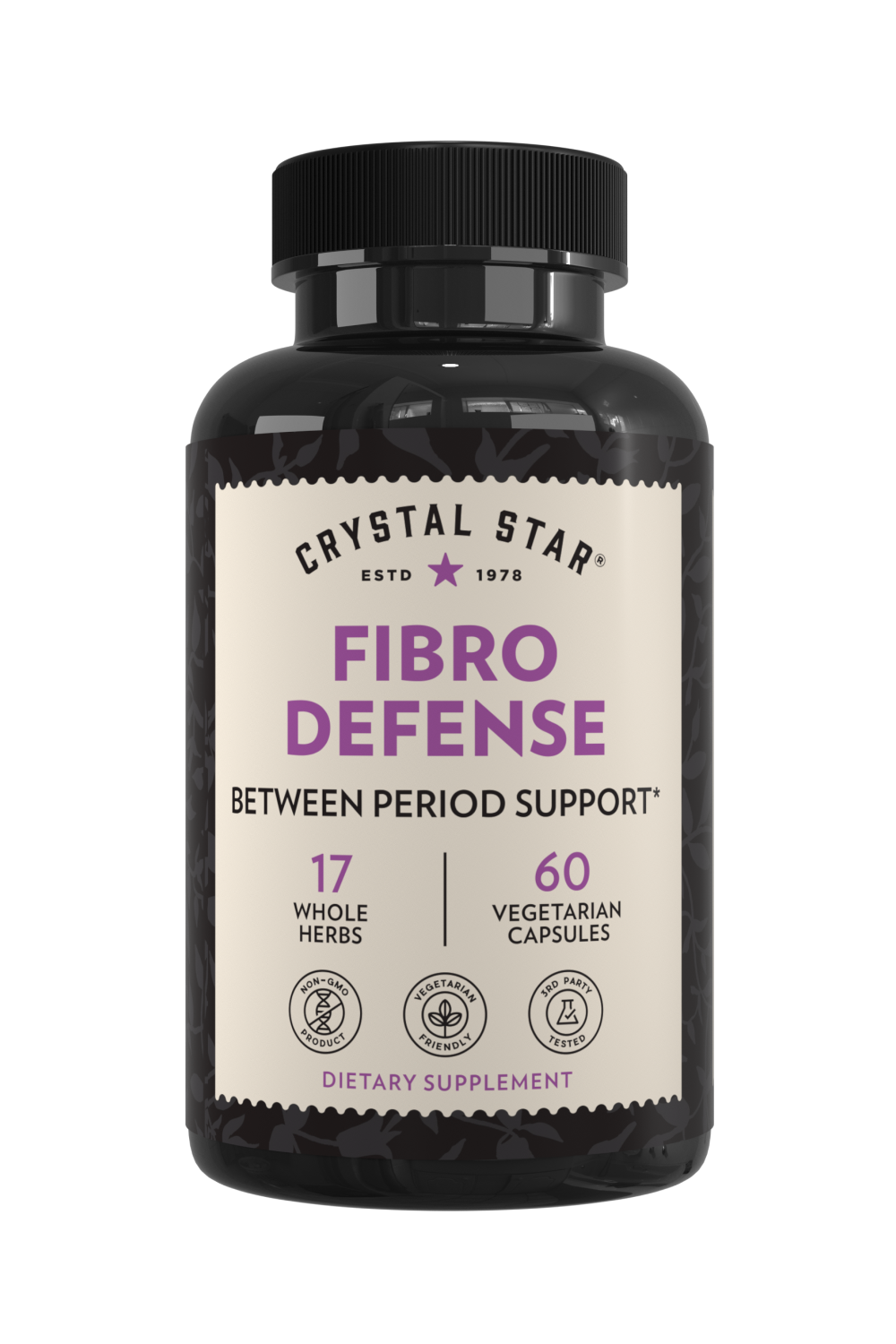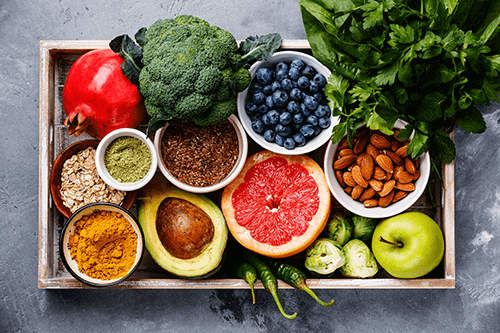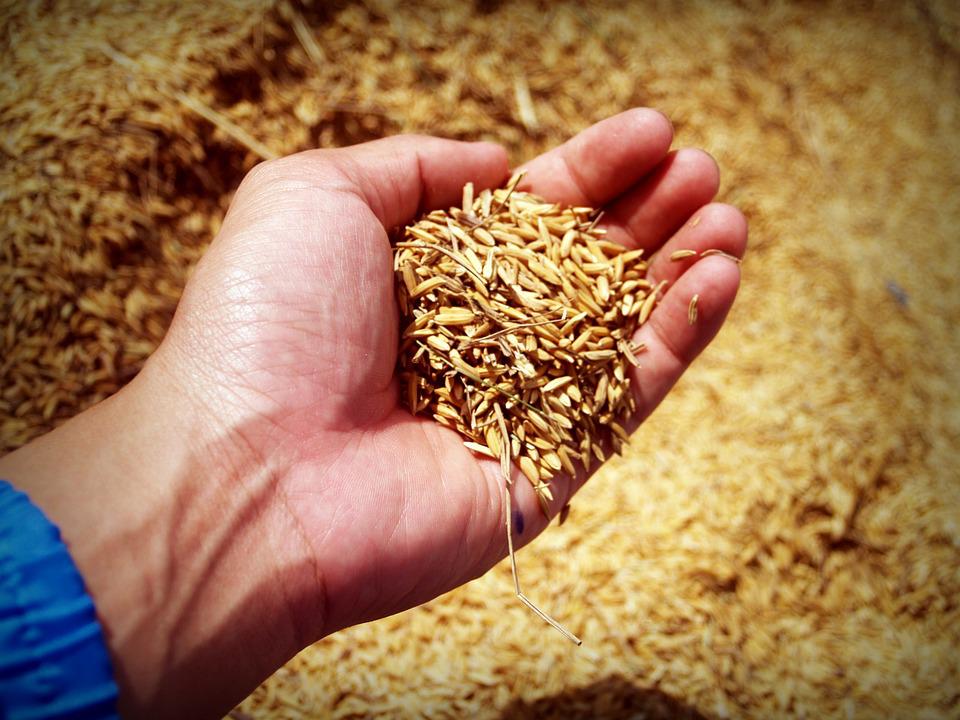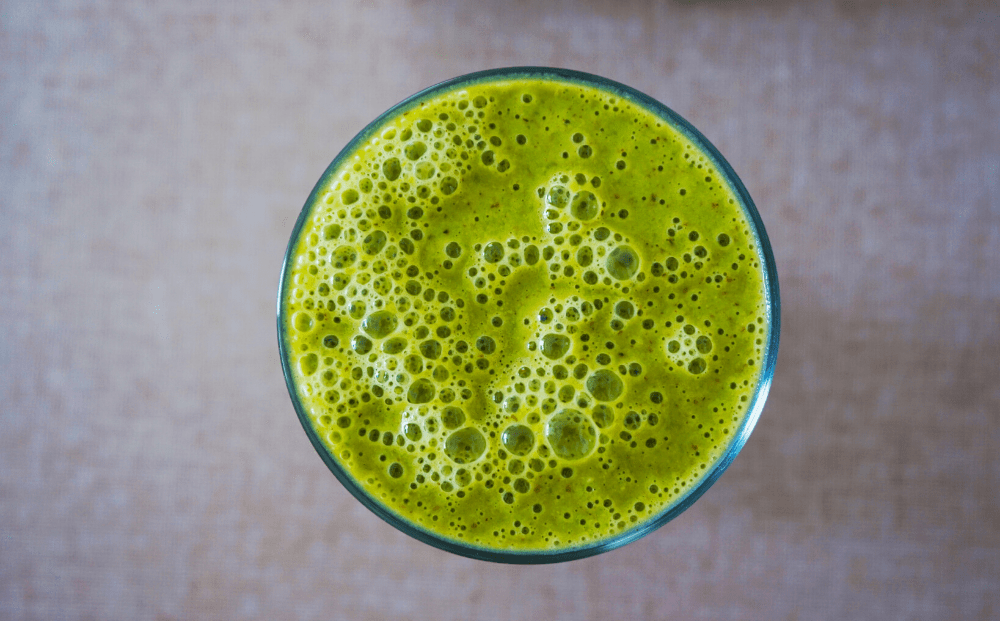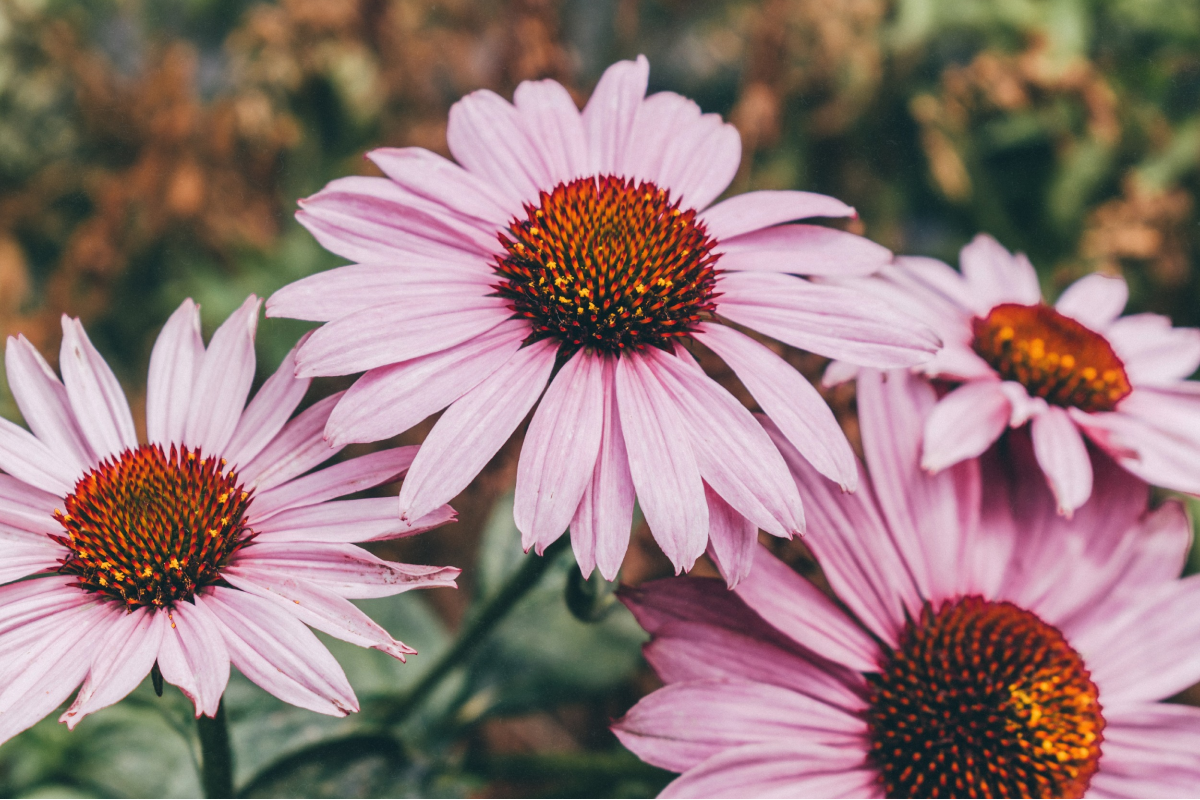
Feb 07, 2020
10 mins read
Echinacea is an immunity ally. How else can it affect your health?
Echinacea is one of the most well known and popular herbal remedies in the world. But what does it actually do? For centuries, people have used this striking purple flower to battle an array of health concerns.
Typically, Echinacea is marketed as an herbal remedy for the prevention and treatment of the common cold. Some people also use Echinacea for other conditions such as pain relief, wound management, and venomous snake bites.
Scientists have done a ton of studies to identify the compounds that make Echinacea an effective complement to mainstream medical treatments. The research shows that Echinacea may modify the immune system while also working as an antioxidant, antimicrobial, anti-viral and even anti-anxiety aid.
Today, you can find Echinacea in many forms including teas, supplements and liquid extracts. These products are easy to find at pharmacies, grocery stores, health shops, and online suppliers.
In this post, we’ll lay out a comprehensive view of Echinacea, including an explanation of how the plant is used medicinally, and the effects it can have on your immune system. We’ll also offer suggestions for how to find an Echinacea preparation that’s right for you.
And if you want more information on medicinal uses of herbs, check out Grow your own herbal medicine cabinet? Yes, you can.
 Echinacea is a genus of perennial, flowering plants in the Asteraceae, or composite daisy family, and is native to central North America. The name Echinacea is derived from the Greek word echinos, meaning hedgehog, because of the similar appearance of the prominent, spiky cone located in the center of the flower.[1] However, the plant is also known by many common names including purple coneflower, pale coneflower, black samson, and Kansas snakeroot.
Echinacea can grow up to two feet tall and produces beautiful purple/pink flowers with a large, spiny, seed head located in the center. You can find the plant growing wild in prairies and open woodlands in well-draining soil.
Inside the genus of Echinacea, there are nine different species. However, only three of the species are used medicinally: Echinacea purpurea, Echinacea angustifolia, and Echinacea pallida. You can use all parts of the plant (both roots and aerial components), to create powders, teas, extracts, expressed juice, and poultices for herbal remedies. You can use either fresh or dried plant materials.[2]
Most commonly, Echinacea preparations are used to stimulate the immune system to help fight infections and combat colds or flu. However, history and science show that Echinacea has many additional health benefits. These include antiviral, antibacterial, antifungal and anti-inflammatory properties.
Echinacea is a genus of perennial, flowering plants in the Asteraceae, or composite daisy family, and is native to central North America. The name Echinacea is derived from the Greek word echinos, meaning hedgehog, because of the similar appearance of the prominent, spiky cone located in the center of the flower.[1] However, the plant is also known by many common names including purple coneflower, pale coneflower, black samson, and Kansas snakeroot.
Echinacea can grow up to two feet tall and produces beautiful purple/pink flowers with a large, spiny, seed head located in the center. You can find the plant growing wild in prairies and open woodlands in well-draining soil.
Inside the genus of Echinacea, there are nine different species. However, only three of the species are used medicinally: Echinacea purpurea, Echinacea angustifolia, and Echinacea pallida. You can use all parts of the plant (both roots and aerial components), to create powders, teas, extracts, expressed juice, and poultices for herbal remedies. You can use either fresh or dried plant materials.[2]
Most commonly, Echinacea preparations are used to stimulate the immune system to help fight infections and combat colds or flu. However, history and science show that Echinacea has many additional health benefits. These include antiviral, antibacterial, antifungal and anti-inflammatory properties.
 Echinacea has a rich history as a traditional healing herb to many Native American tribes located in the Great Plains and surrounding areas. Records suggest that the plant was used by the Cheyenne, Comanche, Choctaw, Dakota, Delaware, Fox, Kiowa, Omaha, Pawnee, Ponca, Ute, and Winnebago people, and perhaps others as well. All three medicinal species of Echinacea were used, but many of the tribes seemed to especially favor the healing properties of E. angustifolia.
The specific medicinal preparations and applications for these plants differed from tribe to tribe, with some using the herb as a painkiller and others as a treatment for burns. Many tribes used Echinacea as a powerful poultice for venomous snake bites and stings.
They also ground and chewed the roots for coughs and sore throats, squeezed the juice from the plant to prepare the skin for extreme heat, and sometimes burned the herb, using the smoke to treat horses with distemper (a bacterial respiratory infection).[3]
It’s important to remember that colonizers collected most of our information on Native American medicinal plant uses. These colonizers often had little interest or respect for the spiritual aspect of Native medicinal practices. The loss of Native populations due to colonization also means that many details of medicinal plant uses were lost.
However, valuable knowledge on the healing properties of Echinacea remain within the tribes today. We can explore early records of their uses and share stories, but ultimately respect that the information related to spiritual and ceremonial practices of this herb belongs to those tribes and will be revealed at their discretion for the sake of cultural preservation.
Echinacea has a rich history as a traditional healing herb to many Native American tribes located in the Great Plains and surrounding areas. Records suggest that the plant was used by the Cheyenne, Comanche, Choctaw, Dakota, Delaware, Fox, Kiowa, Omaha, Pawnee, Ponca, Ute, and Winnebago people, and perhaps others as well. All three medicinal species of Echinacea were used, but many of the tribes seemed to especially favor the healing properties of E. angustifolia.
The specific medicinal preparations and applications for these plants differed from tribe to tribe, with some using the herb as a painkiller and others as a treatment for burns. Many tribes used Echinacea as a powerful poultice for venomous snake bites and stings.
They also ground and chewed the roots for coughs and sore throats, squeezed the juice from the plant to prepare the skin for extreme heat, and sometimes burned the herb, using the smoke to treat horses with distemper (a bacterial respiratory infection).[3]
It’s important to remember that colonizers collected most of our information on Native American medicinal plant uses. These colonizers often had little interest or respect for the spiritual aspect of Native medicinal practices. The loss of Native populations due to colonization also means that many details of medicinal plant uses were lost.
However, valuable knowledge on the healing properties of Echinacea remain within the tribes today. We can explore early records of their uses and share stories, but ultimately respect that the information related to spiritual and ceremonial practices of this herb belongs to those tribes and will be revealed at their discretion for the sake of cultural preservation.
 Are you curious about how you can use Echinacea to boost your immune system or prevent an infection from the common cold? Maybe you’ve read that Echinacea can clear up fungal infections or increase healing for open wounds.
However you aim to use this medicinal plant, we’ll dive into the research below and explain some of the science behind using Echinacea medicinally.
Are you curious about how you can use Echinacea to boost your immune system or prevent an infection from the common cold? Maybe you’ve read that Echinacea can clear up fungal infections or increase healing for open wounds.
However you aim to use this medicinal plant, we’ll dive into the research below and explain some of the science behind using Echinacea medicinally.
 Echinacea is often described as an immunomodulatory herb. That means it can modify your immune response or the overall function of your immune system. But how does it work?
Well, Echinacea contains a very important compound that contributes to immune system modification: Alkamides
Alkamides, or alkylamides, are chemicals found in plants that affect the immune system by binding to CB2 receptors. CB2 receptors are structures in the body that control many important immune functions. Through this method, alkamides can stimulate macrophages, which are cells that locate and destroy harmful pathogens within the body.
Alkamides activate natural killer cells to fight infection and decrease the production of pro-inflammatory cytokines. This means that Echinacea is an anti-inflammatory as well as an immune-boosting herb. Other immunomodulatory compounds found in Echinacea include glycoproteins, polysaccharides, and caffeic acid derivatives.
Interestingly, the roots of E. purpurea and E. angustifolia have the highest concentrations of alkamides in comparison to the flowering parts of the plant. So if you’re looking to stimulate your immune system, you may want to seek out products that contain Echinacea root.[7]
Echinacea is often described as an immunomodulatory herb. That means it can modify your immune response or the overall function of your immune system. But how does it work?
Well, Echinacea contains a very important compound that contributes to immune system modification: Alkamides
Alkamides, or alkylamides, are chemicals found in plants that affect the immune system by binding to CB2 receptors. CB2 receptors are structures in the body that control many important immune functions. Through this method, alkamides can stimulate macrophages, which are cells that locate and destroy harmful pathogens within the body.
Alkamides activate natural killer cells to fight infection and decrease the production of pro-inflammatory cytokines. This means that Echinacea is an anti-inflammatory as well as an immune-boosting herb. Other immunomodulatory compounds found in Echinacea include glycoproteins, polysaccharides, and caffeic acid derivatives.
Interestingly, the roots of E. purpurea and E. angustifolia have the highest concentrations of alkamides in comparison to the flowering parts of the plant. So if you’re looking to stimulate your immune system, you may want to seek out products that contain Echinacea root.[7]
 Echinacea is available in a variety of forms, including teas, herbal supplements, and liquid extracts. Since Echinacea is an extremely popular herb, you can typically find products at the pharmacy, co-op, health store, or online.
It’s important to start slowly and increase your dosage when you’re using Echinacea as an herbal supplement.
Echinacea is part of the daisy family, meaning if you’re allergic to chamomile or ragweed, Echinacea may incite the same allergic reaction when consumed. This is especially important if you’re considering giving Echinacea to a child. A recent study showed a 5% increase in skin rashes in children after they consumed Echinacea.[17]
Echinacea is available in a variety of forms, including teas, herbal supplements, and liquid extracts. Since Echinacea is an extremely popular herb, you can typically find products at the pharmacy, co-op, health store, or online.
It’s important to start slowly and increase your dosage when you’re using Echinacea as an herbal supplement.
Echinacea is part of the daisy family, meaning if you’re allergic to chamomile or ragweed, Echinacea may incite the same allergic reaction when consumed. This is especially important if you’re considering giving Echinacea to a child. A recent study showed a 5% increase in skin rashes in children after they consumed Echinacea.[17]
How do you identify echinacea?
[1] A Review of the Taxonomy of the Genus Echinacea [2] Echinacea species (Echinacea angustifolia (DC.) Hell., Echinacea pallida (Nutt.) Nutt., Echinacea purpurea (L.) Moench): a review of their chemistry, pharmacology and clinical properties [3] Inflammation and Native American medicine: the role of botanicals [4] Echinacea for preventing and treating the common cold [5] Evaluation of echinacea for the prevention and treatment of the common cold: a meta-analysis [6] Echinacea for preventing and treating the common cold [7] The Role of Alkamides as an Active Principle of Echinacea [8] Echinacea plants as antioxidant and antibacterial agents: From traditional medicine to biotechnological applications [9] Propionibacterium Acnes and Chronic Diseases [10] Preliminary data on antibacterial activity of Echinacea purpurea-associated bacterial communities against Burkholderia cepacia complex strains, opportunistic pathogens of Cystic Fibrosis patients [11] The effect of Echinacea purpurea aerial organ dried extract vs. Zinc oxide on skin wound healing in rat: a morphometric & histopathologic study [12] Comparative evaluation of the polyphenol composition and antioxidant capacity of propolis and Echinacea purpurea [13] Echinacea purpurea: Pharmacology, phytochemistry and analysis methods [14] Disruption of fungal cell wall by antifungal Echinacea extracts [15] The effect of Echinacea preparations in three laboratory tests of anxiety: comparison with chlordiazepoxide [16] The Anxiolytic Potential and Psychotropic Side Effects of an Echinacea Preparation in Laboratory Animals and Healthy Volunteers [17] Efficacy and safety of echinacea in treating upper respiratory tract infections in children: a randomized controlled trial. [18] Echinacea and Truth in Labeling [19] https://www.traditionalmedicinals.com [20] https://www.drugs.com/npp/echinacea.html [21] Echinacea species (Echinacea angustifolia (DC.) Hell., Echinacea pallida (Nutt.) Nutt., Echinacea purpurea (L.) Moench): a review of their chemistry, pharmacology and clinical properties [22] Morphology and anatomy of Echinacea purpurea, E. angustifolia, E. pallida and Parthenium integrifolium [23] A Review of the Taxonomy of the Genus Echinacea
What is echinacea?
 Echinacea is a genus of perennial, flowering plants in the Asteraceae, or composite daisy family, and is native to central North America. The name Echinacea is derived from the Greek word echinos, meaning hedgehog, because of the similar appearance of the prominent, spiky cone located in the center of the flower.[1] However, the plant is also known by many common names including purple coneflower, pale coneflower, black samson, and Kansas snakeroot.
Echinacea can grow up to two feet tall and produces beautiful purple/pink flowers with a large, spiny, seed head located in the center. You can find the plant growing wild in prairies and open woodlands in well-draining soil.
Inside the genus of Echinacea, there are nine different species. However, only three of the species are used medicinally: Echinacea purpurea, Echinacea angustifolia, and Echinacea pallida. You can use all parts of the plant (both roots and aerial components), to create powders, teas, extracts, expressed juice, and poultices for herbal remedies. You can use either fresh or dried plant materials.[2]
Most commonly, Echinacea preparations are used to stimulate the immune system to help fight infections and combat colds or flu. However, history and science show that Echinacea has many additional health benefits. These include antiviral, antibacterial, antifungal and anti-inflammatory properties.
Echinacea is a genus of perennial, flowering plants in the Asteraceae, or composite daisy family, and is native to central North America. The name Echinacea is derived from the Greek word echinos, meaning hedgehog, because of the similar appearance of the prominent, spiky cone located in the center of the flower.[1] However, the plant is also known by many common names including purple coneflower, pale coneflower, black samson, and Kansas snakeroot.
Echinacea can grow up to two feet tall and produces beautiful purple/pink flowers with a large, spiny, seed head located in the center. You can find the plant growing wild in prairies and open woodlands in well-draining soil.
Inside the genus of Echinacea, there are nine different species. However, only three of the species are used medicinally: Echinacea purpurea, Echinacea angustifolia, and Echinacea pallida. You can use all parts of the plant (both roots and aerial components), to create powders, teas, extracts, expressed juice, and poultices for herbal remedies. You can use either fresh or dried plant materials.[2]
Most commonly, Echinacea preparations are used to stimulate the immune system to help fight infections and combat colds or flu. However, history and science show that Echinacea has many additional health benefits. These include antiviral, antibacterial, antifungal and anti-inflammatory properties.
Traditional uses of echinacea
 Echinacea has a rich history as a traditional healing herb to many Native American tribes located in the Great Plains and surrounding areas. Records suggest that the plant was used by the Cheyenne, Comanche, Choctaw, Dakota, Delaware, Fox, Kiowa, Omaha, Pawnee, Ponca, Ute, and Winnebago people, and perhaps others as well. All three medicinal species of Echinacea were used, but many of the tribes seemed to especially favor the healing properties of E. angustifolia.
The specific medicinal preparations and applications for these plants differed from tribe to tribe, with some using the herb as a painkiller and others as a treatment for burns. Many tribes used Echinacea as a powerful poultice for venomous snake bites and stings.
They also ground and chewed the roots for coughs and sore throats, squeezed the juice from the plant to prepare the skin for extreme heat, and sometimes burned the herb, using the smoke to treat horses with distemper (a bacterial respiratory infection).[3]
It’s important to remember that colonizers collected most of our information on Native American medicinal plant uses. These colonizers often had little interest or respect for the spiritual aspect of Native medicinal practices. The loss of Native populations due to colonization also means that many details of medicinal plant uses were lost.
However, valuable knowledge on the healing properties of Echinacea remain within the tribes today. We can explore early records of their uses and share stories, but ultimately respect that the information related to spiritual and ceremonial practices of this herb belongs to those tribes and will be revealed at their discretion for the sake of cultural preservation.
Echinacea has a rich history as a traditional healing herb to many Native American tribes located in the Great Plains and surrounding areas. Records suggest that the plant was used by the Cheyenne, Comanche, Choctaw, Dakota, Delaware, Fox, Kiowa, Omaha, Pawnee, Ponca, Ute, and Winnebago people, and perhaps others as well. All three medicinal species of Echinacea were used, but many of the tribes seemed to especially favor the healing properties of E. angustifolia.
The specific medicinal preparations and applications for these plants differed from tribe to tribe, with some using the herb as a painkiller and others as a treatment for burns. Many tribes used Echinacea as a powerful poultice for venomous snake bites and stings.
They also ground and chewed the roots for coughs and sore throats, squeezed the juice from the plant to prepare the skin for extreme heat, and sometimes burned the herb, using the smoke to treat horses with distemper (a bacterial respiratory infection).[3]
It’s important to remember that colonizers collected most of our information on Native American medicinal plant uses. These colonizers often had little interest or respect for the spiritual aspect of Native medicinal practices. The loss of Native populations due to colonization also means that many details of medicinal plant uses were lost.
However, valuable knowledge on the healing properties of Echinacea remain within the tribes today. We can explore early records of their uses and share stories, but ultimately respect that the information related to spiritual and ceremonial practices of this herb belongs to those tribes and will be revealed at their discretion for the sake of cultural preservation.
What are the health benefits of echinacea?
 Are you curious about how you can use Echinacea to boost your immune system or prevent an infection from the common cold? Maybe you’ve read that Echinacea can clear up fungal infections or increase healing for open wounds.
However you aim to use this medicinal plant, we’ll dive into the research below and explain some of the science behind using Echinacea medicinally.
Are you curious about how you can use Echinacea to boost your immune system or prevent an infection from the common cold? Maybe you’ve read that Echinacea can clear up fungal infections or increase healing for open wounds.
However you aim to use this medicinal plant, we’ll dive into the research below and explain some of the science behind using Echinacea medicinally.
Can echinacea prevent the common cold?
The common cold is indeed common—over 70% of the US population experiences at least one viral respiratory infection a year.[4] Since modern medicine has yet to create a prescription that can wipe out viruses, many people turn to herbal remedies in an attempt to speed up their healing. Thankfully, scientists have conducted numerous studies on the effects that Echinacea has on the common cold. That said, the results are a bit contradictory: The University of Connecticut School of Pharmacy reviewed more than a dozen scientific studies on Echinacea and the common cold. They concluded that the herb could reduce an individual's chance of contracting a viral infection by about 58%. They also noted that treating an already existing infection with Echinacea could reduce the duration of the cold by approximately a day and a half.[5] On the other hand, a review conducted by the Cochrane Acute Respiratory Infections Group compiled 24 scientific studies on the topic and determined that there was no statistically significant reduction in cold symptoms in subjects who were treated with Echinacea. However, their analysis did suggest that Echinacea may reduce the risk of catching a cold by 10 to 20 percent.[6] The takeaway? Echinacea is not proven to successfully treat individuals who have contracted a cold virus, but it may benefit those wishing to avoid it in the future (however, by how much is unclear). The science on this topic is varied and inconclusive because there are tons of variables to consider when testing the effects of Echinacea. There are three different species of Echinacea, multiple different parts of the plant (root, leaf, flower, or a mixture), and numerous extraction methods. Also, storage conditions can affect the potency of certain medicinal compounds found in Echinacea. Simply put, there are too many variables in the present studies to know precisely how Echinacea affects the common cold.Does echinacea stimulate your immune system?
 Echinacea is often described as an immunomodulatory herb. That means it can modify your immune response or the overall function of your immune system. But how does it work?
Well, Echinacea contains a very important compound that contributes to immune system modification: Alkamides
Alkamides, or alkylamides, are chemicals found in plants that affect the immune system by binding to CB2 receptors. CB2 receptors are structures in the body that control many important immune functions. Through this method, alkamides can stimulate macrophages, which are cells that locate and destroy harmful pathogens within the body.
Alkamides activate natural killer cells to fight infection and decrease the production of pro-inflammatory cytokines. This means that Echinacea is an anti-inflammatory as well as an immune-boosting herb. Other immunomodulatory compounds found in Echinacea include glycoproteins, polysaccharides, and caffeic acid derivatives.
Interestingly, the roots of E. purpurea and E. angustifolia have the highest concentrations of alkamides in comparison to the flowering parts of the plant. So if you’re looking to stimulate your immune system, you may want to seek out products that contain Echinacea root.[7]
Echinacea is often described as an immunomodulatory herb. That means it can modify your immune response or the overall function of your immune system. But how does it work?
Well, Echinacea contains a very important compound that contributes to immune system modification: Alkamides
Alkamides, or alkylamides, are chemicals found in plants that affect the immune system by binding to CB2 receptors. CB2 receptors are structures in the body that control many important immune functions. Through this method, alkamides can stimulate macrophages, which are cells that locate and destroy harmful pathogens within the body.
Alkamides activate natural killer cells to fight infection and decrease the production of pro-inflammatory cytokines. This means that Echinacea is an anti-inflammatory as well as an immune-boosting herb. Other immunomodulatory compounds found in Echinacea include glycoproteins, polysaccharides, and caffeic acid derivatives.
Interestingly, the roots of E. purpurea and E. angustifolia have the highest concentrations of alkamides in comparison to the flowering parts of the plant. So if you’re looking to stimulate your immune system, you may want to seek out products that contain Echinacea root.[7]
Can echinacea fight viral and bacterial infections?
Whether you’ve got a viral case of the stomach flu or a bacterial skin infection, studies have shown that Echinacea preparations have potential antimicrobial properties. One explanation for these disease-fighting abilities is the presence of germacrene D, an organic compound found in Echinacea that has antimicrobial and insecticidal properties. In several studies, scientists have tested Echinacea’s ability to fight off specific pathogens. In one in vitro (petri dish) experiment, 6 mg of Echinacea was as effective as a single unit of penicillin when combating Staphylococcus aureus (also known as a Staph infection). Scientists also discovered that certain extracts of E. purpurea can successfully inhibit the growth of numerous different pathogens including E. coli, Streptococcus, L. pneumophila, Clostridium difficile, and the potentially acne-causing bacteria, P. acne.[8],[9] Some researchers suggest that these antimicrobial properties may come from Echinacea’s essential oils, or possibly from the symbiotic bacteria that live on the Echinacea plants themselves.[10]Can echinacea support wound healing?
Traditionally, Echinacea was used to promote healing for wounds. Today we know this ability is likely due to its polysaccharides—strands of molecules that promote collagen growth and stimulate wound healing. Since Echinacea is an immunomodulatory herb, it may help accelerate healing when taken orally as a supplement or a tea. One study tested the effects of Echinacea when applied directly to wounds. It found that dried, aerial extracts of E. purpurea successfully increased healing when used topically to treat wounded rats.[11] However, Echinacea’s effects on human wounds still need more research. So if you find yourself with an open cut or sore, consult your physician to avoid serious infections or other health issues.Is echinacea a source of antioxidants?
Antioxidants are substances that may help protect against free radicals—unbalanced atoms that can damage cells, protein & DNA. Left unchecked,free radicals can create a condition known as oxidative stress that has the potential to trigger several human diseases, including cancer, Alzheimer’s disease, arthritis, and accelerated aging. Antioxidants are believed to counteract the effects of free radicals and potentially prevent oxidative stress. Thankfully, many plants contain substances known as phenols, which have significant antioxidant properties that protect the plant from infections and sun damage. As it turns out, when consumed, phenols have antioxidant properties that help humans as well. In one study, one E. purpurea ethanol extract appeared to have four-to-five times more antioxidant power than vitamin C.[12]Echinacea has antifungal properties
Fungal infections in humans can cause many embarrassing symptoms, including bad breath and unflattering rashes. A recent study showed an extract of E. purpurea significantly hindered the growth of a common fungal strain, Candida albicans. The study suggests that Echinacea may potentially help control human yeast infections.[13] In another study, the effects of Echinacea on fighting fungus showed promising results in vitro. They found that Echinacea can affect fungal cell walls and cause cell death in two yeast species: S. cerevisiae and Cryptococcus. Based on the results of these studies, it appears Echinacea can target specific fungal pathogens in humans. However, we need more research to discover exactly which components of Echinacea are responsible for its antifungal properties.[14]Can echinacea help with anxiety?
Scientists believe Echinacea may modify actions within the hippocampus and effectively diminish feelings of anxiety and fear. The Institute of Experimental Medicine in Budapest, Hungary created a study to examine the anxiety-reducing effects of extracts from three Echinacea preparations: E. purpurea root, E. purpurea herb, and E. angustifolia root. The tests were conducted on lab rats and concluded that one of the preparations had significant effects on anxiety: E. angustifolia roots.[15] Two years later, the scientists conducted a new study examining E. angustifolia on human patients with chronic anxiety. After three days of treatment with 40 mg of E. angustifolia extract, subjects reported a decrease in their anxiety—an effect that lasted up to two weeks after the 7-day trial ended.[16] So far, research on Echinacea as an anti anxiety herb is limited. However, the results of these initial studies show that E. angustifolia roots can potentially affect symptoms of anxiety.What are the pros and cons of using echinacea?
When it comes to selecting a medicinal treatment or herbal supplement, it’s important to weigh the pros and cons. While a particular therapy may help your condition, the common side effects could potentially outway the advantages. Echinacea is no exception. Taking Echinacea as a nutritional or medicinal supplement has many promising benefits. As you read above, it has properties that can stimulate your immune system and combat viral and bacterial infections—meaning it may protect you in the face of external pathogens. It also has compounds that are anti-inflammatory, antioxidant, and antifungal, and may help speed up wound healing. Even though Echinacea is an herbal remedy of few side effects, it does have a handful of drawbacks. In some individuals Echinacea has caused allergic reactions and rashes, as well as digestive discomfort. As an immunomodulatory herb, Echinacea has the potential to harm individuals with autoimmune diseases (overactive immune systems) and should also be used with extreme caution in conjunction with any immunosuppressive drugs. Lastly, you may find it challenging to locate Echinacea preparations that are accurately labeled, appropriately collected, and properly stored in a manner that will render them actually effective.How do you use echinacea?
 Echinacea is available in a variety of forms, including teas, herbal supplements, and liquid extracts. Since Echinacea is an extremely popular herb, you can typically find products at the pharmacy, co-op, health store, or online.
It’s important to start slowly and increase your dosage when you’re using Echinacea as an herbal supplement.
Echinacea is part of the daisy family, meaning if you’re allergic to chamomile or ragweed, Echinacea may incite the same allergic reaction when consumed. This is especially important if you’re considering giving Echinacea to a child. A recent study showed a 5% increase in skin rashes in children after they consumed Echinacea.[17]
Echinacea is available in a variety of forms, including teas, herbal supplements, and liquid extracts. Since Echinacea is an extremely popular herb, you can typically find products at the pharmacy, co-op, health store, or online.
It’s important to start slowly and increase your dosage when you’re using Echinacea as an herbal supplement.
Echinacea is part of the daisy family, meaning if you’re allergic to chamomile or ragweed, Echinacea may incite the same allergic reaction when consumed. This is especially important if you’re considering giving Echinacea to a child. A recent study showed a 5% increase in skin rashes in children after they consumed Echinacea.[17]
Which echinacea products can I trust?
If you plan on purchasing effective Echinacea, you should take a close look at the listed ingredients of the product and the company that sells them. In 2003, a review of 59 US commercial Echinacea preparations showed that 10% of the products had no measurable trace of Echinacea in them whatsoever. The review also showed that 48% of the products were inconsistent or inaccurate in the labeling of their harvesting methods or Echinacea species used.[18] That said, it’s possible these brands may have improved sourcing oversight in the intervening years. But if you’re serious about reaping benefits from medicinal Echinacea, make sure you do your research and find a company that you can trust. Here are three questions you should consider when looking for a trustworthy Echinacea product:- Does the product state what species of plant is being used?
- Does the product state which part of the plant (root or aerial) is being used?
- Does the product employ third-party testing or verification of the quality of their product?
How much echinacea should I take?
Since all Echinacea products are different, there is no universal recommended dosage. So for each preparation you buy, be sure to check the label for their specific suggested use. Here are some rough guidelines for Echinacea consumption.- Dry powdered extract: 300 mg (3x daily)
- Liquid extract: 0.25–1.25 mL (3x daily)
- Tincture: 1–2 mL (3x daily)
- Expressed juice: 2–3 mL (3x daily)
- Dried Root: 0.5–1 g (3x daily) [20]
Can I collect my own echinacea?
If you’d prefer to collect and create your own herbal remedy, Echinacea grows wild in many areas of the United States and is fairly easy to grow at home. This can be extra beneficial because fresh cone flower contains three times the amount of immunomodulatory capabilities compared to a dried herb.[21] Identifying Echinacea species can be difficult. Before harvesting any plant for medicinal use or consumption, you should identify the species using at least three different sources to verify your find. Here are some quick tips to start.How do you identify echinacea?

- purpurea grows tallest of the three medicinal Echinacea species (60-180 cm). It is also known to have vibrantly colored ligules (the purple petals), growing in deep shades of lavender or fuschia. It blooms from late June through September.
- pallida can grow 40-90 cm in height, with drooping ligules that are longer than the diameter of the center cone, and has white pollen. The plant blooms from May to July.
- angustifolia can be identified by its short height (10-50 cm). The ligules may appear white, purple, or pink and are shorter and broader in shape than the ligules of other Echinacea species. They bloom in June and July.[22]
4 tips and reminders for using echinacea
- Start small when you first introduce any dietary supplement to your body. Look for signs of allergic reaction or digestive discomfort before increasing your dose.
- Give yourself time to do adequate research to find the best products from the most reliable companies.
- Echinacea has more scientific support as a preventative measure for the common cold than it does as a treatment once you’re already sick. This means Echinacea is a good supplement to have around the house before cold and flu season starts.
- Ask your physician for medical advice before taking Echinacea if you have any conditions that affect your immune system.
Conclusion
Whether you’re looking to boost your immune system or simply add a new helpful herb into your routine, Echinacea is an accessible and beneficial herb to support your natural wellbeing. You can try it out as a tea, or use it as a daily herbal supplement for cold and flu season. Either way, Echinacea is a medicinal plant that humans have used for centuries to address many different ailments, and who knows, it might even come in handy if you run into a rattlesnake.Additional resources for echinacea
If you want to learn more about the use and effects of Echinacea, check out these additional resources:- The US Department of Human Health and Services National Center for Complementary and Integrative Health Thoughts on Echinacea
- Cochrane Review of Past and Recent Echinacea Research
- Echinacea Exalted!: The Botany, Culture, History and Medicinal Uses of the Purple Coneflowers
- Echinacea: Herbal Medicine with a Wild History
- Echinacea: Nature’s Immune Enhancer
[1] A Review of the Taxonomy of the Genus Echinacea [2] Echinacea species (Echinacea angustifolia (DC.) Hell., Echinacea pallida (Nutt.) Nutt., Echinacea purpurea (L.) Moench): a review of their chemistry, pharmacology and clinical properties [3] Inflammation and Native American medicine: the role of botanicals [4] Echinacea for preventing and treating the common cold [5] Evaluation of echinacea for the prevention and treatment of the common cold: a meta-analysis [6] Echinacea for preventing and treating the common cold [7] The Role of Alkamides as an Active Principle of Echinacea [8] Echinacea plants as antioxidant and antibacterial agents: From traditional medicine to biotechnological applications [9] Propionibacterium Acnes and Chronic Diseases [10] Preliminary data on antibacterial activity of Echinacea purpurea-associated bacterial communities against Burkholderia cepacia complex strains, opportunistic pathogens of Cystic Fibrosis patients [11] The effect of Echinacea purpurea aerial organ dried extract vs. Zinc oxide on skin wound healing in rat: a morphometric & histopathologic study [12] Comparative evaluation of the polyphenol composition and antioxidant capacity of propolis and Echinacea purpurea [13] Echinacea purpurea: Pharmacology, phytochemistry and analysis methods [14] Disruption of fungal cell wall by antifungal Echinacea extracts [15] The effect of Echinacea preparations in three laboratory tests of anxiety: comparison with chlordiazepoxide [16] The Anxiolytic Potential and Psychotropic Side Effects of an Echinacea Preparation in Laboratory Animals and Healthy Volunteers [17] Efficacy and safety of echinacea in treating upper respiratory tract infections in children: a randomized controlled trial. [18] Echinacea and Truth in Labeling [19] https://www.traditionalmedicinals.com [20] https://www.drugs.com/npp/echinacea.html [21] Echinacea species (Echinacea angustifolia (DC.) Hell., Echinacea pallida (Nutt.) Nutt., Echinacea purpurea (L.) Moench): a review of their chemistry, pharmacology and clinical properties [22] Morphology and anatomy of Echinacea purpurea, E. angustifolia, E. pallida and Parthenium integrifolium [23] A Review of the Taxonomy of the Genus Echinacea


